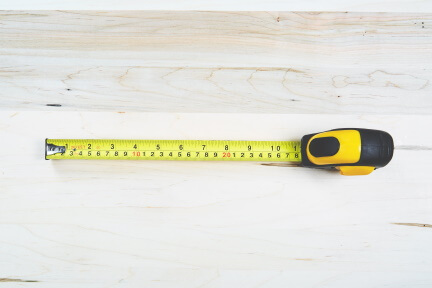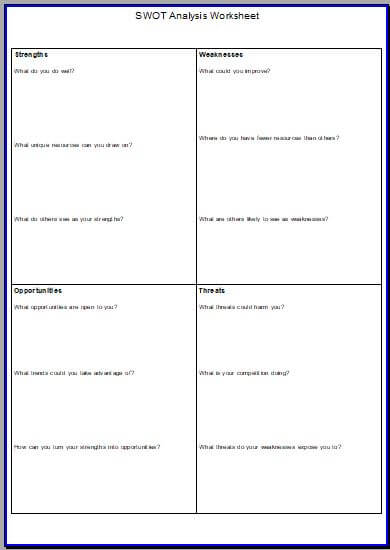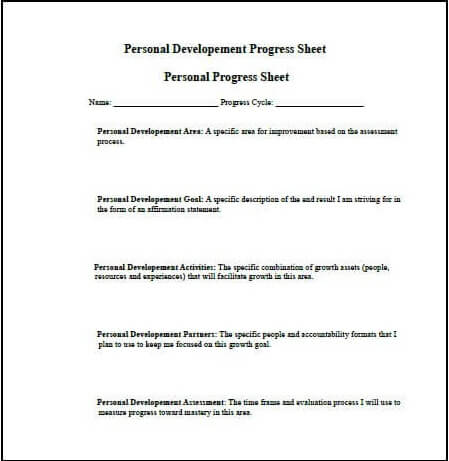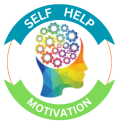One of the foremost uses of self assessment tools for personal development is to measure your developmental progress.
Table of Contents

Hi. Ian here and welcome to this article on self assessment tools for personal development.
If you’re looking for ways to improve yourself, you’re in the right place. Self assessment tools are a great way to learn more about yourself, your strengths, weaknesses, and areas for growth.
They can help you set goals, develop an improvement plan, and track your progress.
There are many different self assessment tools available, both online and offline. Some are general, while others focus on specific areas such as personality, career, relationships, or health.
Here are a few tips for using self assessment tools effectively:
- Choose the right tool for you. There are many different self assessment tools available, so it’s important to choose one that is relevant to your goals and needs. Do some research to find a tool that is reliable and valid.
- Be honest with yourself. Self assessment tools are only effective if you are honest with yourself about your strengths and weaknesses. Don’t try to answer questions in a way that you think will make you look good.
- Use the results to create a plan for improvement. Once you have completed a self assessment tool, take some time to reflect on the results. What are your strengths? What areas do you need to work on? Create a plan for how you will improve your weaknesses and build on your strengths.
- Review your progress regularly. Don’t just complete a self assessment tool once and forget about it. Review your results regularly to track your progress and make adjustments to your plan as needed.
Here are some examples of self assessment tools that you can use for personal development:
- Personality tests can help you understand your personality type, strengths, and weaknesses. Some popular personality tests include the Myers-Briggs Type Indicator (MBTI) and the Big Five Personality Test.
- Strengths assessments can help you identify your top strengths and how you can use them to achieve your goals. Some popular strengths assessments include StrengthsFinder 2.0 and CliftonStrengths.
- Career assessments can help you identify your career interests, skills, and values. Some popular career assessments include the Holland Code and the Myers-Briggs Type Indicator for Careers.
- Relationship assessments can help you understand your relationship style and how to improve your relationships. Some popular relationship assessments include the Gottman Relationship Inventory and the Enneagram for Relationships.
- Health assessments can help you assess your overall health and identify areas where you need to make improvements. Some popular health assessments include the Health Risk Appraisal (HRA) and the Patient Health Questionnaire (PHQ-9).
Self assessment tools can be a valuable tool for personal development. By using them effectively, you can learn more about yourself, set goals, and develop an improvement plan.
- Use first-person pronouns (I, you, we) to connect with your readers.
- Use contractions (I’m, you’re, we’re) to make your writing more conversational.
- Use humor and anecdotes to make your writing more engaging.
- Write in a clear and concise style.
- Avoid using jargon and technical terms.
So, that’s a wrap! I hope this article has given you some ideas about how to use self assessment tools for personal development. Remember, the most important thing is to be honest with yourself and to use the results to create a plan for improvement. Please read on for more great information. Good luck on your journey!
Resources:
- What are self-assessment tools?:
- How to use self-assessment tools effectively: https://theeducationhub.org.nz/8-tools-for-peer-and-self-assessment/
- List of self-assessment tools:
If you can’t measure your progress, you can’t figure out how far you have come, or how far you still have left to go.
Here are some ways you can easily and consistently measure your ongoing achievements.
Methods Of Assessing Your Progress
Keep Statistics
Any personal development goal that you set yourself, no matter how small, must be important to you, or else you wouldn’t have set it in the first place. So no matter what it takes, you must measure your progress.
Stay within your Time Frame
An important aspect of any personal development goal that you make is staying within the time you allotted yourself to achieve the goal. A time frame acts as a marker for your progress. A time frame is what makes your plan, measurable.
Draw A Line Through It
Whenever you achieve something on the way to your personal development goal, whenever you clear another stepping stone, draw a line through it. This is a great idea when applied to small daily goals. You can record your daily goals in your diary or whatever method of measuring that you’ve chosen, and as soon as you’ve accomplished a specific step, you can draw a line through it.

Following are 3 excellent examples of free self-assessment tools for personal development.
They can be used individually or combined to assess Personality Development and/or Workplace Development.
- SWOT ANALYSES MATRIX
- PERSONAL GROWTH SHEET
- PERSONAL DEVELOPMENT PROGRESS SHEET
Method 1 – SWOT ANALYSES MATRIX
Personal Self-Assessment Questionnaire
An excellent way of assessing your talents and skills, as well as your strengths and weaknesses, is to avail yourself of a system known as SWOT analysis.
SWOT is an acronym that stands for: Strengths – Weaknesses – Opportunities – Threats
The Strengths, Weaknesses, Opportunities, and Threats (SWOT) analysis helps you to identify your positive and negative attributes. You can use this resource to develop a full awareness of your situation, which will help with both planning your personal development goals and decision-making.
A SWOT analysis will provide perspective and uncover connections and areas for action.
Why should I use a SWOT analysis?
The name of this method says it all:
Strength, Weakness, Opportunity, Threat.
The SWOT method is useful in the search for personal growth.
When do I use SWOT?
A SWOT analysis can offer helpful insights at any stage of personal development. It will enable you to explore new solutions to a problem. Choose the best way of instigating new ideas. Identify threats that may create a stumbling block, enabling you to plan around them. It can show where changes can be made.
If you can’t seem to go forward, knowing and understanding your strengths and your weaknesses can show you what your opportunities, as well as your priorities, are. It will enable you to adjust and refine your plans at any time.
A fresh and attractive opportunity might present itself that will help you to expand your plans, or a new threat might cause you to replan a certain step. Bear in mind that the very reason for carrying out a SWOT exercise is to enable you to discover your strengths and your weaknesses.
When you know what these are, you will have a list of positive traits that will help take you forward and a list of potential problems that need to be dealt with or at least recognized.
The SWOT Matrix Explained
All the best self-assessment tools for personal development have four sections, and the SWOT matrix is no exception. You use each of the four sections, sequentially, to ascertain you’re current status, and where you want to get to, and then create a plan of action to get there, thereby enabling you to assess your progress.
SWOT Analysis Worksheet
Self-Assessment Tools For Strengths And Weaknesses
Strengths
- What do you do well?
- What unique resources can you draw on?
- What do others see as your strengths?
Weaknesses
- What could you improve?
- Where do you have fewer resources than others?
- What are others likely to see as weaknesses?
Opportunities
- Now, in turn, list all opportunities that exist in the future
- What opportunities are open to you?
- What trends could you take advantage of?
- How can you turn your strengths into opportunities?
Threats
- Then, in turn, list all threats that exist in the future
- What threats could harm you?
What threats do your weaknesses expose you to? What is your competition doing?
Step 1 – Current Strengths
List all your strengths that exist now. Then, in turn, list all weaknesses that exist now. Be realistic, but avoid modesty!
Step 2 – What might be…
List all opportunities that exist in the future. Opportunities are potential future strengths. Next, make a list of all threats that you perceive in the future. Threats are potential future weaknesses.
Step 3 – Plan of action…
Evaluate your SWOT analysis worksheet to create an action plan to address each of the four areas.
In Summary
- Strengths need to be maintained, built upon, or leveraged.
- Weaknesses need to be set right or stopped.
- Opportunities need to be ranked by importance and optimized.
- Threats need to be solved or minimized.
SWOT Analysis Example
Let us suppose that your personal development goal is to improve your writing skills.
An example of a SWOT analysis for these follows.
SWOT Analysis Worksheet For Improving Writing Skills
Strengths
- I have the motivation to improve my writing skills.
- I have the time to learn.
- I have the appropriate computer and internet access.
- I have the required finance to purchase an appropriate online course.
Weaknesses
- I have never taken an online course before.
- The assumption is that online learning will be suitable for me.
Opportunities
- Research information on appropriate online courses.
- Research Udemy.com Study reviews.
Threats
- Online courses are a mixed bag when it comes to quality.
From the above SWOT analysis, you can see that your strengths created opportunities that when prioritized and optimized would enable you to overcome your weaknesses.
From here, you set a list of goals that would enable you to undertake the most appropriate online course.
The foregoing is a very simple example but serves to illustrate the SWOT Analysis method.
A sample of a SWOT Analysis Matrix worksheet in PDF format can be downloaded here.

Method 2 – Personal Development Progress Sheet
Here is an excellent tool for expanding your findings from your SWOT Analysis.
A sample of the Personal Development Progress Sheet in PDF format can be downloaded here.

The Personal Development Progress Sheet is divided into 5 sections as described below, and I have used the findings from the previous SWOT Analysis as examples.
Section 1. Personal Development Area: A specific area for personal development.
Section 2.
Example: “I am developing into an expert in the written word, with the facility to write clearly in any style.
Section 3. Personal Development Activities: The exact combination of personal development assets (people, resources, and experiences) that will enable personal development in this area.
Example: “I will subscribe to, “English Writing Skills” by David Boughton. An Udemy.com online course.
Section 4. Personal Development Partners: The precise people and accountability formats that I plan to use to enable me to remain focused on this personal development goal.
Example: “I will be held to account by my online tutor, David Boughton via fortnightly written tests, as part of the English Writing Skills online course”.
Section 5. Personal Development Assessment: The time frame and assessment process I will use to measure progress toward mastery in this area.
Example: “The course runs for 1 month and I will assess my progress by taking into account the scores of my weekly and final exams.
Method 3 – Daily Self Assessment Template
The third tool is a method that can be used to assess progress daily.
A sample of the Daily Self Assessment Template in PDF format can be downloaded here.
Assessing your accomplishments at the end of each day can tell a lot about the kind of person you are. Self-assessment is a crucial first step in being aware of yourself, and self-awareness is the first step to personality development leading to a lifetime of meaning and integrity.
This Daily Self Assessment Template is a tool that can measure your daily activities and performance based on the four dimensions of personal development: physical, mental, emotional, and spiritual.
This tool allows you to collect data about your daily activities and practices and compare your scores day by day. It promotes personal accountability and will motivate you to take action so that you can continue pursuing your most important goals.
Tips:
- Assess yourself against each of the listed activities and practices.
- Use some listed ideas to develop your physical, mental, emotional, and spiritual intelligence.
- Add ideas that are relevant to your situation.
- Assess your progress at the end of every day.
- Do it every day to improve.
- You need to be honest and accurate when assessing your progress.
FAQs
Why self-assessment is important for personal development?
It’s a necessary step in personal and professional development because it allows you to develop internal diagnostics, feelings of empowerment, and a sense of control in your life.
What are the 4 core self-evaluations?
Core self-evaluation (CSE) is a theory that includes four personality dimensions: self-esteem, self-efficacy, locus of control, and emotional stability.
What are the 3 components of the ME self?
Rogers’ Three Parts of Self-Concept
Ideal self: The ideal self is the person you want to be. … Self-image: Self-image refers to how you see yourself at this moment in time. … Self-esteem: How much you like, accept, and value yourself all contribute to your self-concept.
Final Words
Self-assessment tools are a fantastic way to gain insight into your personal development. These tools can help you to identify your strengths, weaknesses, and areas for improvement. With this knowledge, you can create a personalized plan for growth and development.
One of the most popular self-assessment tools is the Myers-Briggs Type Indicator (MBTI), which provides insight into your personality type. Other tools focus on specific areas, such as emotional intelligence or communication skills.
It’s important to remember that self-assessment tools are just one part of personal development. They provide valuable information, but it’s up to you to take action and make changes. So, don’t be afraid to use these tools to gain a better understanding of yourself and your growth potential!
Remember. One of the foremost uses of self assessment tools for personal development is that they will enable you to measure your progress, so if you would like to know what kind of personality you are go here for the free “16 Personalities Test”.
And by utilizing one or all of the tools previously mentioned you can be sure of knowing exactly where you are on your personal development journey.
Wishing you Health, Wealth, and Happiness
